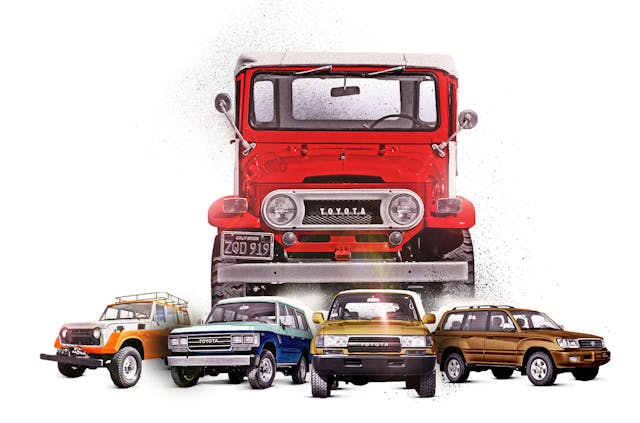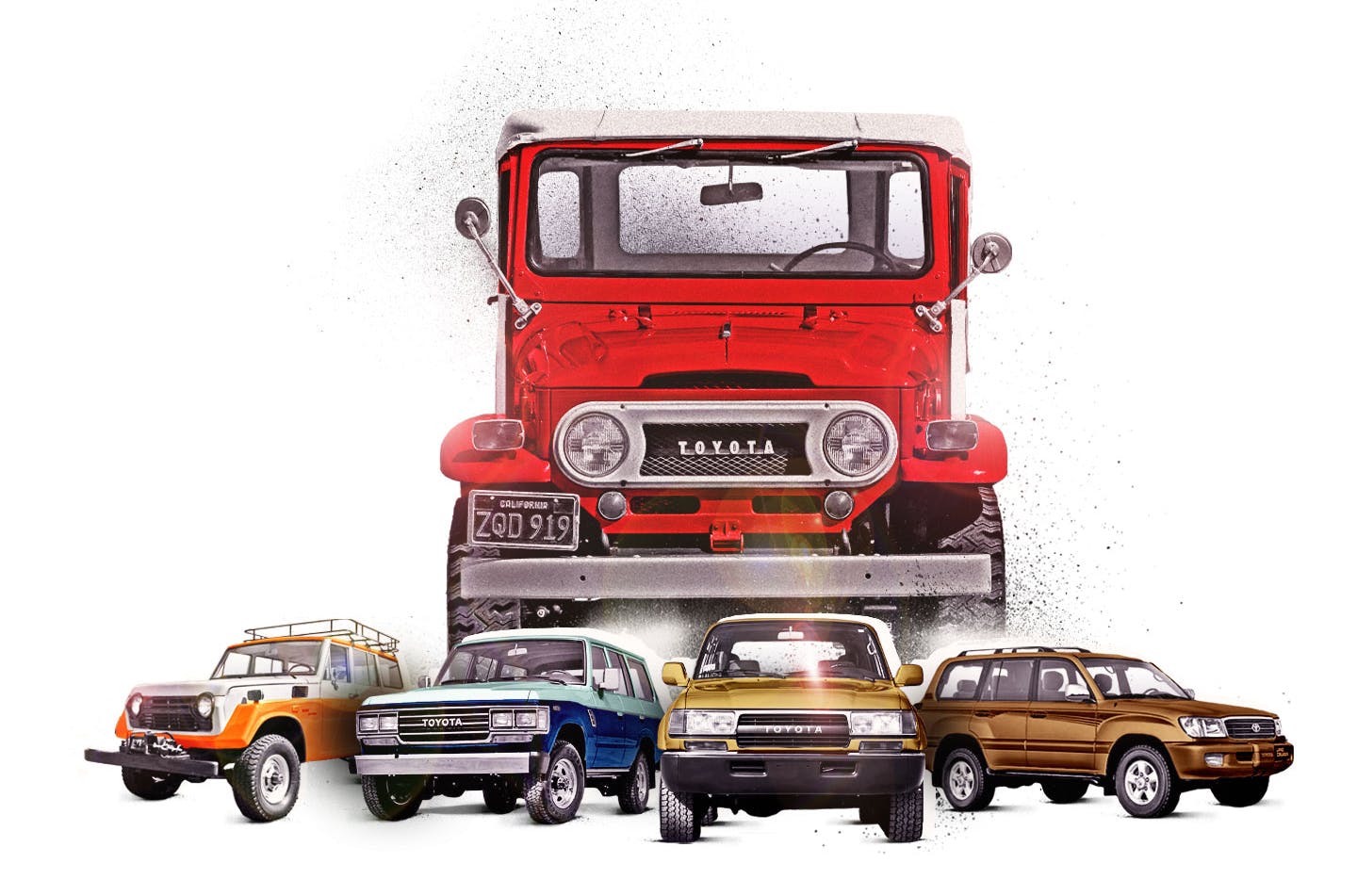Media | Articles
Toyota Land Cruiser wagons do nothing but go up in value
As a kid, I was fascinated by 4×4 trucks. I convinced my dad we needed one, and in 1981 he bought a new Jeep CJ-5 Renegade. It sure looked the business, and everything about it appeared to say, “Don’t mess with me.”
Looking inside, however, we were surprised by the bare metal floors. “Looks like the factory forgot to install the carpet. Happens all the time,” the salesman assured us. On the ride home from the dealership, the battery fell out of its tray and spewed acid under the hood. Apparently, the factory forgot the battery hold-down as well. Dad didn’t understand the “Jeep Thing” after all, and the CJ-5 had to go.
We tried an FJ40 Land Cruiser next and quickly discovered it was an industrial-strength Toyota. We were hooked and our family hasn’t been without a Land Cruiser since. And we aren’t alone in that. For 60 years, the Land Cruiser, in all of its shapes and sizes, has become a cult classic.
The poster child for the brand is indeed the venerable 1963–84 FJ40. Their values skyrocketed from 2010–15, then fell off. Blame the slow, harsh ride many buyers weren’t prepared for and an influx of shoddily restored ones from Central and South America.

Amid the FJ40’s swings, however, one segment of the Land Cruiser market has done nothing but go up: wagons. More usable, often better optioned, and with a better ride thanks to their longer wheelbases, these “long roof” Cruisers are the ones to watch. Rarest among them is the FJ40-based FJ45LV. A restored 1967 example sold for $198,000 in 2015, which shocked many but shows the demand is out there for these non-FJ40s.
Marketplace
Buy and sell classics with confidence
Here’s a primer on Toyota Land Cruiser wagons, which are as practical as they are collectible.
1967–80 FJ55

Median Quote Value: $20,850
Dubbed the “Iron Pig,” this was the first modern Land Cruiser wagon. FJ55s featured the tough drivetrain and running gear of the FJ40s but in a new fully boxed frame. Long overlooked by FJ faithful and collectors alike, “Pigs” are now coming into their own. Low production and a high attrition rate make finding a good one difficult today. As such, prices are hard to track, but I know of private sales for great FJ55s that have approached six figures. If you want a Piggy of your own, now is the time.
1981–90 FJ60/FJ62
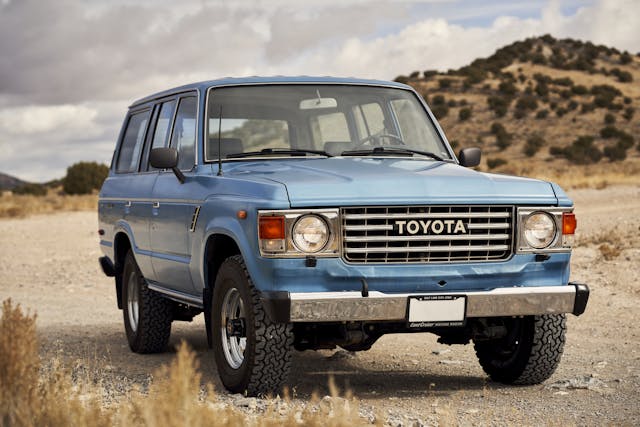
Median Quote Value: $18,500
The evolution of the FJ55, it was designed to better compete in the growing SUV market. For collectibility, the 1981–87 FJ60 is the pick, with its traditional round headlights, carbureted 4.2-liter 2F straight-six engine, and four-speed manual transmission. The 1988–90 FJ62 brought two Land Cruiser firsts—electronic fuel injection on its 4.0-liter 3F six and an automatic transmission. Although the FJ60/62s are less opulent, demand for them appears to be overtaking that for Jeep Grand Wagoneers, not unexpected to those familiar with both vehicles.
1991–97 FJ80
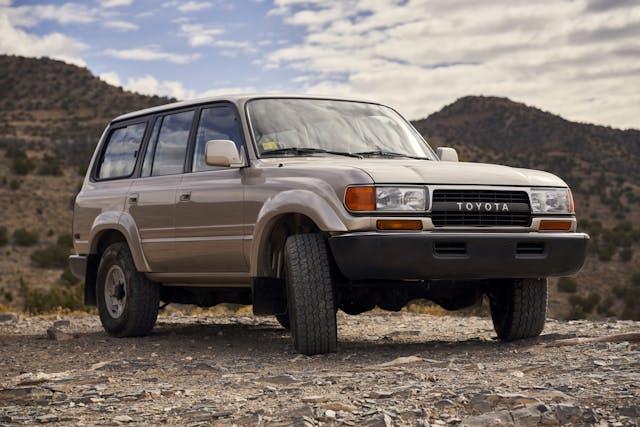
Median Quote Value: $15,000
The “Bubble” Cruiser was even more of a departure for the brand. Still sporting live axles, the FJ80 now rode on coil springs and had the most luxurious interior yet. Through 1962, the 80 continued with the 3F engine, while later trucks used the 4.5-liter FZ, a 24-valve DOHC six. All featured full-time 4WD and had optional electronic locking differentials, making them far more capable than other SUVs in their class. Many have been used hard, but mint ones are comfy machines.
1998–2007 J100

Median Quote Value: $13,000
The J100 represents another pivotal moment for the brand, employing independent front suspension and the first V-8. Concessions to luxury and on-road use, yes, but they kept the model relevant. With values still in decline, they are an awful lot of SUV for the money.
The FJ value proposition
Land Cruisers are endearing machines with uncommon quality and longevity. Toyota continues to keep things simple and focus on a 20-plus-year service life in an industry that rewards disposability. This is reflected in their values, which have also proven to be more durable than those of other SUVs. Regardless of model, even 200,000-mile examples still bring strong money, while low-mileage unicorns continue to set new records. But be warned, once Land Cruisers get into your blood, they can be an awfully hard habit to break. Not that you’d want to, of course.
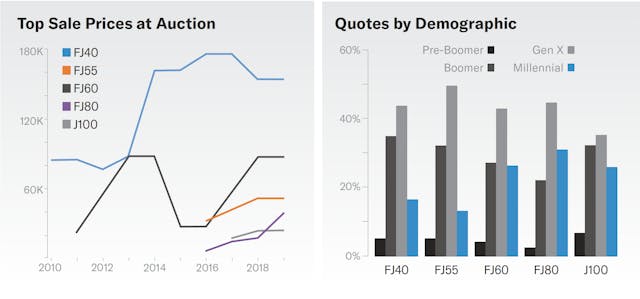
The article first appeared in Hagerty Drivers Club magazine. Click here to subscribe to our magazine and join the club.
